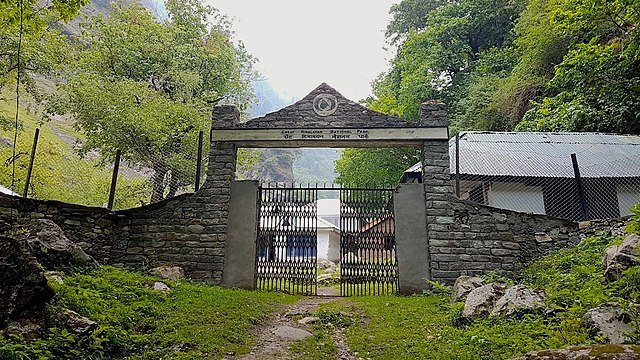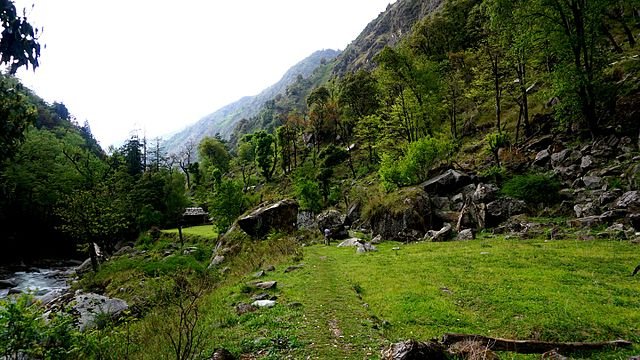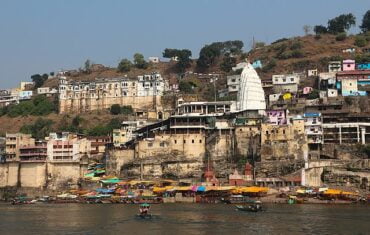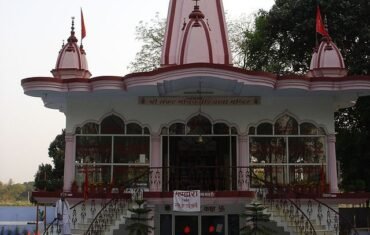Great Himalayan National Park (GHNP) is a national park in India, located in Kullu region in the state of Himachal Pradesh. The park was established in 1984 and is spread over an area of 1171 sq km. It is a part of the Great Himalayan Range and covers elevations ranging from 1500 to 6000 m. The park is a UNESCO World Heritage Site since 2014, in recognition of its outstanding significance for biodiversity conservation. The park protects over 1000 plant species, 31 mammal species and 209 bird species, as well as amphibians, reptiles and insects. Visit during Kullu Manikaran local sightseeing.
The park is also home to some rare and endangered species such as Himalayan brown bear, snow leopard, musk deer, monal and western tragopan. The park offers various opportunities for nature lovers and adventure seekers to explore its pristine beauty and diversity. In this article, we will explore the location, timing, entry fees, significance, things to do, and FAQs of this park.
Overview of Great Himalayan National Park

Great Himalayan National Park (GHNP) is one of the most recent additions to the network of wildlife reserves in the Himalayan region in India and adjoining countries. The park comprises four valleys – Tirthan, Sainj, Jiwa Nal and Parvati – that are the major sources of water for the rural and urban centres of Kullu district. The park is rich in natural and cultural heritage, as it encompasses several sacred sites, ancient villages, temples and monasteries. The park also supports the livelihoods of the local communities who depend on its resources for agriculture, horticulture, grazing, fishing and tourism.
Location of Great Himalayan National Park
Great Himalayan National Park (GHNP) is located about 50 km from Kullu town and 500 km from Delhi. It is easily accessible by road from Kullu town and other nearby places. The nearest airport is at Bhuntar, which is about 48 km from the park. The nearest railway station is at Joginder Nagar, which is about 165 km from the park.
Timing / Entry Fees Great Himalayan National Park

The park is open for visitors throughout the year. However, the best time to visit is from April to June and September to November, when the weather is pleasant and the vegetation is lush green. The winter months from December to March are also suitable for wildlife viewing, but require proper equipment and guidance. The monsoon months from July to August are not recommended due to heavy rainfall and landslides.
The entry fee for visiting the park is Rs. 100 per person per day for Indians and Rs. 500 per person per day for foreigners. The fee includes a guide fee of Rs. 50 per person per day. The fee can be paid at the forest department offices at Sai Ropa or Gushaini, which are the main entry points to the park.
How to Reach Great Himalayan National Park from City Centre

The park is about 50 km from Kullu town, which can be reached by auto-rickshaw, taxi or bus. The nearest bus stand is at Aut, which is about 26 km from the park. From Aut, you can take a local bus or hire a taxi to reach Gushaini or Banjar, which are the main entry points to the park. From there, you can explore the park by foot or by local transport.
Things to Do / Must See Great Himalayan National Park
- Enjoy wildlife watching in the park and spot various species of animals such as Himalayan brown bear, snow leopard, musk deer, Himalayan tahr, blue sheep, goral etc.
- Enjoy birdwatching in the park and spot various species of birds such as western tragopan, monal, koklass pheasant, lammergeier, golden eagle etc.
- Enjoy trekking in the park and explore various destinations such as Raktisar Glacier (the origin of Sainj River), Tirath Glacier (the origin of Tirthan River), Hanskund Lake (a sacred lake), Shilt Hut (a forest rest house) etc.
- Enjoy camping in the park and experience the thrill of staying close to nature. You can either pitch your own tent or book a campsite from local operators.
- Enjoy fishing in the Tirthan River and catch some trout fish. You can either bring your own fishing equipment or rent it from local operators. You can also get a fishing license from the forest department at Sai Ropa or Gushaini.
- Visit the local villages and interact with the friendly and hospitable people of the park. You can learn about their culture, traditions, cuisine and lifestyle. You can also buy some local handicrafts and souvenirs from them.
Significance of Great Himalayan National Park

The park is a significant destination for nature lovers and adventure seekers who want to explore the unspoilt beauty and diversity of the Himalayas. It is also a significant destination for conservationists and researchers who want to study and protect the rich biodiversity of the park and its buffer zone. The park is a living example of how humans and nature can coexist in harmony and mutual respect.
FAQs
Q: What are the accommodation options in the park?
A: There are various accommodation options in the park such as homestays, guesthouses, cottages, resorts and campsites. You can choose according to your budget and preference. However, it is advisable to book in advance as the park gets crowded during peak seasons.
Q: What are the essential things to carry for the park?
A: Some of the essential things to carry for the park are warm clothes, raincoat, trekking shoes, sunscreen, sunglasses, hat, water bottle, snacks, torch, first aid kit, camera, binoculars, fishing equipment and permit.
Q: What are the safety precautions to follow in the park?
A: Some of the safety precautions to follow in the park are to respect the local culture and customs, avoid littering and polluting the environment, avoid venturing into restricted areas or alone at night, avoid feeding or disturbing the wildlife, follow the instructions of the guides and forest officials and inform someone about your itinerary and whereabouts.
Conclusion
Great Himalayan National Park (GHNP) is a UNESCO World Heritage Site for biodiversity conservation. It is a paradise for nature lovers and adventure seekers who want to experience the pristine beauty and diversity of the Himalayas. It is also a paradise for conservationists and researchers who want to study and protect the rich biodiversity of the park and its buffer zone. Great Himalayan National Park (GHNP) is a perfect getaway for anyone who wants to witness the beauty and diversity of Kullu valley.










